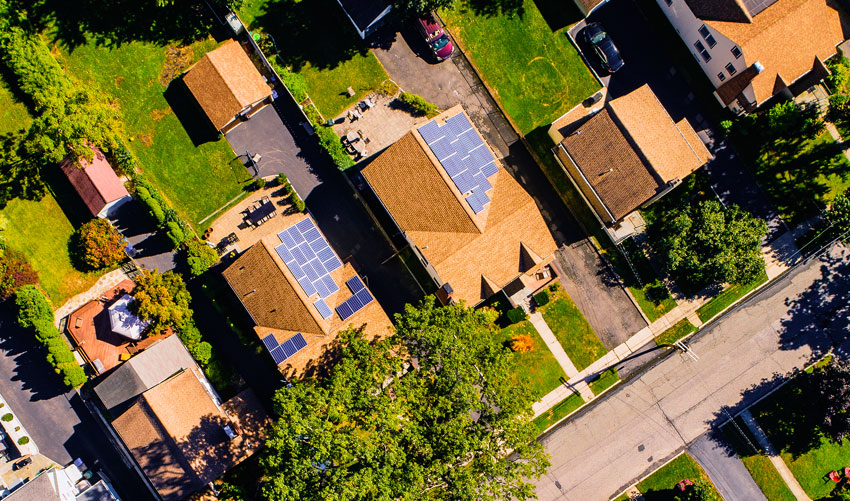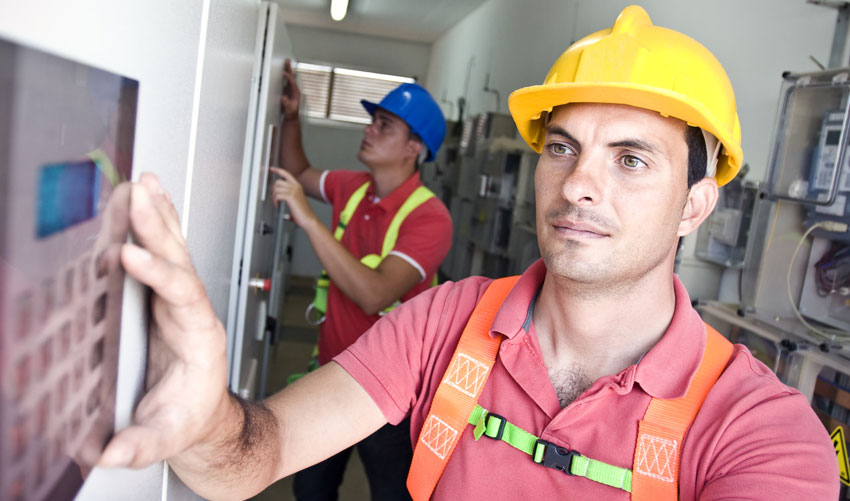Wiring a house via solar panels or traditionally can be tricky. Fortunately, when it comes to solar panels, there are only two main options to choose from which will determine how your solar power system is going to work. You can either wire your solar panels in a series, or you can wire them in a parallel fashion.
The specific wiring option that you choose will depend entirely on the intention of your solar panels. To figure that out though, you need to know what is involved in both options. This mini-guide will go over the differences in both series and parallel solar panels, as well as the pros and cons of each option:
Smaller systems usually create the best solar panel series. To wire this option, you link different panels together to create one larger panel with a higher voltage (while the amps stay the same). With this method, just like when putting in a battery, the positive side of the pane connects to the negative side of the next panel and so on, to create a string circuit.
HES PV provides an easy-to-follow diagram.
In a solar panel series, the voltage adds up but the amps remain the same. For instance, if you created a 72-volt solar panel series, you could use three 12-volt solar panels, each with 5 amps. The amps would remain 5 but the voltage would be 72.
Pros of Solar Panels in Series
Most of the benefits for a series solar panel system are found when the system is being used for smaller jobs. If you are camping off-grid and want small appliances to work, or you are traveling in a camper with solar panels on the roof, this would be a good option for you.
Here are the pros of series solar panels:
Less Wiring is Used: The more wire that is required, the more expensive a project is and the more difficult the installation. Plus, if you are off grid and want to travel, having more wires might get in your way. More wires are also heavier, bulkier, and harder to work with. Thus, many solar enthusiasts like the simplicity of the series wiring system.
Easier For Long Wire Runs: The knowledge that there are fewer wires to deal with also works into this pro; as series-wired solar panels are preferred if you need to run a long wire. The reason is that there are fewer wires and only a few local connections that run, one right after the other. Therefore, if there is a bit of a distance between the panels and the controller, series wiring is easier to manage.
Cons of Solar Panels in Series
Wiring solar panels in series is good for a lot of different and unique wiring situations. However, there are some drawbacks to this method of wiring.
Here are the cons of wiring with a solar panel series:
More Expensive MPPT Controller is Required: If you are trying to cut costs, one thing you will not be able to skimp on with the solar panel series method is the MPPT controller. While this controller is more versatile, it is more of an upfront investment.
No Fallback for Wiring Issues: The way that solar panel series wiring is set up can be reminiscent of putting up holiday lights. To make the whole system work, you connect one end to the other throughout the series. Unfortunately, this negative aspect of series wiring is also reminiscent of our worst holiday-lighting fear. During the holidays, if one strand goes out, the whole display is blown. The same is true for series-wiring. If one wire is faulty, the whole system will shut down.
Shadow Issues Can Completely Wipe You Out: Of course, solar panels need the sun to create solar energy. Thus, every cloudy or rainy day affects the performance of solar panels. However, with solar panel series-wiring, even if one panel is in the shade the efficiency of the whole system will be compromised.
Solar Panels in Parallel
For the parallel solar panel wiring method, you are going to have to wire all of the positive terminals and all of the negative terminals of each panel together. This will create a continuous flow for your circuit to follow.
HES PV also provides an easy-to-follow diagram for parallel solar panels.
In a solar panel system with parallel wiring, the amps add up but the voltage remains the same. It is the exact opposite of solar panels in series, which is why this is better for bigger jobs.
Here are the pros and cons of the parallel solar panel wire formation.
Pros of Solar Panels in Parallel
Even though parallel solar panels are not the most used method of wiring, it definitely has its benefits.
Here are the pros of wiring your solar panels via the parallel method:
Mis-matched Panels Will Work: As long as the voltage is the same for both panels, the wattage for the panels can be different and the circuit will still work. Therefore, if you have a specific number of amps you need, you are going to want to use the right selection of panels to reach that goal.
Does Not Require MPPT Remote: It is possible to hook up an MPPT remote to a parallel system but it is not necessary.
Cons of Solar Panels in Parallel
If you are powering a large area, there are a good number of benefits to parallel solar panels. However, there are some issues to this method that give a few solar panel enthusiasts pause.
Here are the cons that come from parallel solar panels:
Cannot Increase Voltage: The problem with being unable to increase the voltage is that you cannot use it to increase the efficiency of your system. So, unfortunately, you get what you get, meaning when you decide what you need, you have to be correct in your thought process as there is no going back! Thankfully, there is a lot of guidance and information about exactly which voltage will offer what kind of efficiency.
More Loss Due to DC-AC Inversion: Another issue with not being able to increase the voltage is that you will take the full force of the loss in electricity as it travels through the wires. Any inversion process is going to have some loss but with a parallel system, there is no way to lessen the blow.
In summation, as with most of the specific decisions you need to make when deciding which system will work for you, the right wiring method depends on your specific purpose. If you are looking for more voltage, the series solar panel wiring is going to work for you. If you are looking for more amps, you are going to want to go with the parallel solar panel wiring.




